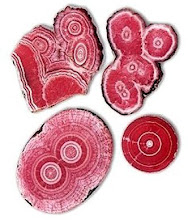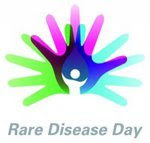

Scientists develop the first atomic view of key genetic processes (w/ Video)
August 25, 2010 Enlarge
Scientists at Penn State University have created the first 3-D picture of genetic processes that happen inside every cell of our bodies. The picture is the first-ever image of a protein interacting with DNA in its tightly packed "nucleosome" form. The research, which reveals new information about genetic processes, is expected to aid future investigations into diseases such as cancer. This 2-D image illustrates the RCC1 chromatin protein interacting with the nucleosome. Credit: Song Tan lboratory, Penn State University
In a landmark study to be published in the journal Nature, scientists have been able to create the first picture of genetic processes that happen inside every cell of our bodies. Using a 3-D visualization method called X-ray crystallography, Song Tan, an associate professor of biochemistry and molecular biology at Penn State University, has built the first-ever image of a protein interacting with the nucleosome -- DNA packed tightly into space-saving bundles organized around a protein core. The research is expected to aid future investigations into diseases such as cancer.
As the genetic blueprint of life, DNA must be deciphered or "read," even when densely packed into nucleosomes. The nucleosome is therefore a key target of genetic processes in a cell and a focus of scientific investigations into how normal and diseased cells work. Previous studies at Penn State and other research institutions led to the discovery of chromatin enzymes -- proteins that act to turn specific genes on or off by binding to the nucleosome. Since the three-dimensional structure of the nucleosome was determined 13 years ago, scientists have wondered how chromatin enzymes recognize and act on the nucleosome to regulate gene expression and other processes in a cell. "We needed to visualize how these enzymes are able to read such a complicated structure as the nucleosome," Tan said.
Scientists at Penn State University have created the first 3-D picture of genetic processes that happen inside every cell of our bodies. The picture is the first-ever image of a protein interacting with DNA in its tightly packed "nucleosome" form. The research, which reveals new information about genetic processes, is expected to aid future investigations into diseases such as cancer. This 3-D animation illustrates the RCC1 chromatin protein interacting with the nucleosome. Credit: Song Tan laboratory, Penn State University
To tackle this problem, Ravindra D. Makde, a postdoctoral member of the research team led by Tan, grew molecular crystals of the protein RCC1 (regulator of chromosome condensation, a protein critical for proper separation of chromosomes during cell division) bound to the nucleosome, and used X-ray crystallography to determine the atomic structure of the complex. "Our results showed that the RCC1 protein binds to opposite sides of the nucleosome -- similar to pedals positioned on a tricycle wheel." The structure provides atomic details of how an enzyme can recognize both DNA and components of the protein core of the nucleosome. Unexpectedly, the structure also showed how DNA can stretch as it wraps into a nucleosome. "These findings provide the basis for understanding how RCC1 and other chromatin enzymes interact with DNA as it is packaged into chromatin in our cells," Tan said.
The investigations were performed at the Penn State Center for Eukaryotic Gene Regulation, a multidisciplinary center focused on understanding the molecular basis for how genes are turned off and on in our bodies. "For years, the research community has been at an impasse," said Frank Pugh, Director of the center and the Willaman Professor in Molecular Biology at Penn State. "We were limited to only speculating how cellular proteins might bind the nucleosome. Now, with this structure, we are one step closer to understanding how cells read chromatin to regulate gene expression."
After nearly a decade of working to this goal, Tan and his team are excited to see the intricate interactions between a chromatin protein and the nucleosome. They are, however, even more enthusiastic about future prospects. "Our goal now is to determine the structures of other biologically and medically important chromatin enzymes bound to the nucleosome," said Tan. "We anticipate such studies will explain fundamental genetic processes and provide the basis for new therapeutics against human diseases such as cancer."
Provided by Pennsylvania State University
open here to see the VIDEO:
Scientists develop the first atomic view of key genetic processes (w/ Video)


































No hay comentarios:
Publicar un comentario